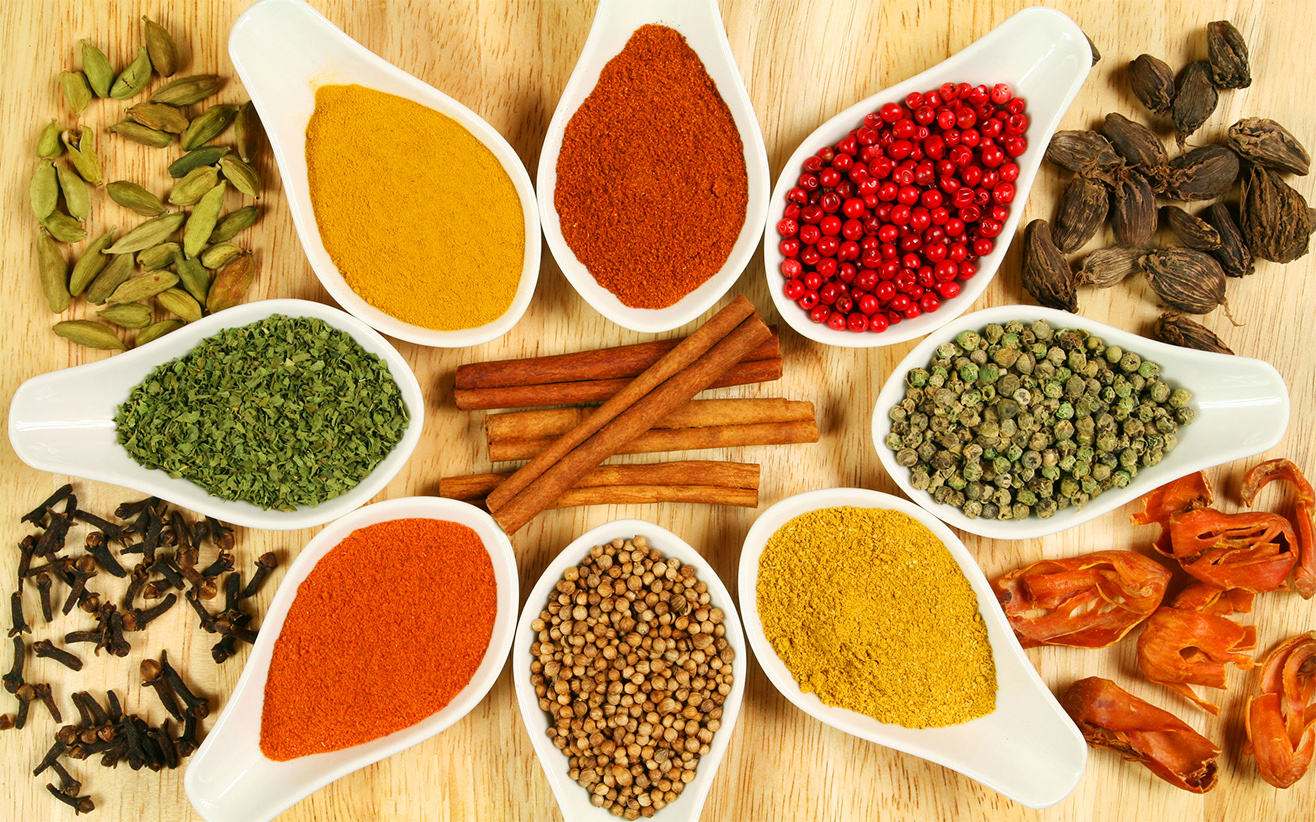Indian spices include a variety of spices grown
across the Indian subcontinent (a sub-region of South Asia). With different climates in
different parts of the country, India produces a variety of spices, many of which are native
to the Subcontinent, while others were imported from similar climates and have since been
cultivated locally for centuries.
Spices are used in different forms - whole, chopped, ground, roasted, sauteed, fried and as
topping. They blend food to extract the nutrients and bind them in a palatable form. Some
spices are added at the end as a flavouring and are typically heated in a pan with ghee or
cooking oil before being added to a dish. Lighter spices are added last, and spices with
strong flavour should be added first. Curry is not a spice, but a term used by western
people and refers to any dish in Indian cuisine that contains several spices blended
together and could be with a gravy base or a dry item.
A spice is a dried seed, fruit, root, bark, or vegetable substance primarily used for
flavoring, coloring or preserving food. Spices are distinguished from herbs, which are parts
of leafy green plants used for flavoring or as a garnish. Many spices have antimicrobial
properties. This may explain why spices are more commonly used in warmer climates, which
have more infectious disease, and why the use of spices is prominent in meat, which is
particularly susceptible to spoiling. A spice may have other uses, including medicinal,
religious ritual, cosmetics or perfume production, or as a vegetable.

